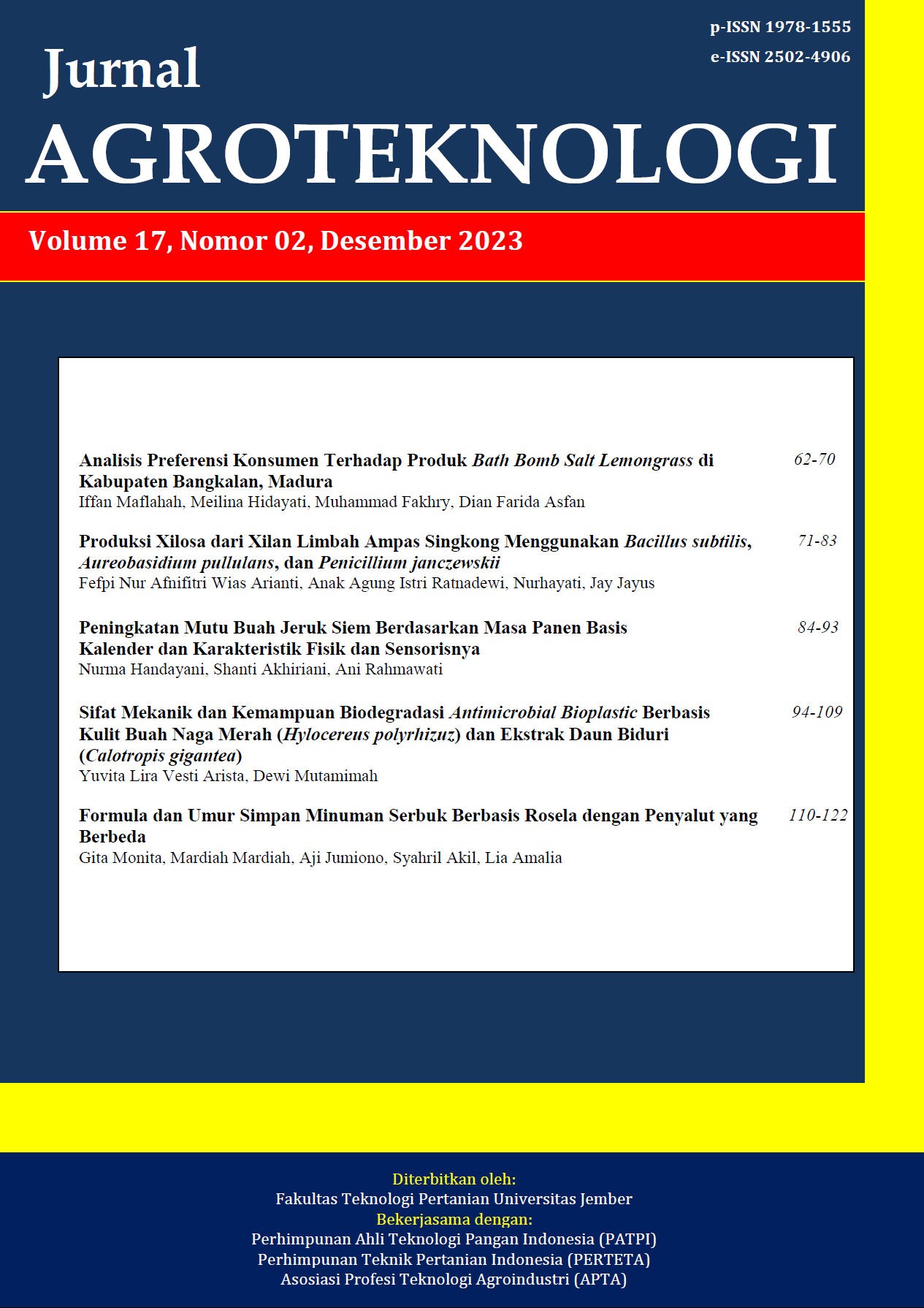Sifat Mekanik dan Kemampuan Biodegradasi Antimicrobial Bioplastic Berbasis Kulit Buah Naga Merah (Hylocereus polyrhizuz) dan Ekstrak Daun Biduri (Calotropis gigantea)
DOI:
https://doi.org/10.19184/j-agt.v17i02.42930Abstract
Plastic is often chosen as packaging for food products because it’s considered practical, non-corrosive, low cost, and able to withstand product water migration, but it’s difficult to degrade. So that need biodegradable plastic untuk handle that, but most of the biodegradable plastics that have been developed only focus on ease of degradation, do not focus on the microbial contamination problem. One alternative that can be developed is to make antimicrobial bioplastic based on starch from dragon fruit peel and biduri leaves as an antimicrobial source. Until now there is no further information regarding the mechanical properties and degradation ability of antimicrobial bioplastic based on starch from dragon fruit peel and biduri leaf waste. Therefore this research was carried out to determine the mechanical properties including tensile strength, modulus young, and elongation as well as degradation ability. The research was conducted using the completely randomized design factorial method which consists of 2 factors where the first factor was variation of the dragon fruit peel starch (P1: 15%, P2: 30%, P3: 45%, P4: 60%) and the second factor was the addition of biduri leaf extract (B1: 3%, B2: 6%, B3: 9%, B4: 12%. Research on the mechanical properties of elongation, tensile strength tests, and elongation at break tests was carried out using Mat. Testing Machine while Young's modulus testing uses tension testing. Antimicrobial bioplastic degradation capability testing using Aspergillus niger is calculated based on weight loss. The research results showed that the treatment with the addition of 15% dragon fruit peel starch (P1) had good mechanical properties ranging from tensile strength, modulus young, and elongation, while the addition of biduri extract had no effect. The best biodegradation ability was with the addition of 60% starch (P4). The use of starch in greater concentrations can reduce mechanical properties but increase biodegradation capacity.
Keywords: antimicrobial packaging, biodegradable polymer, cross linkig, starch
Downloads
Downloads
Published
Issue
Section
License
Jurnal Agroteknologi has CC-BY-SA or an equivalent license as the optimal license for the publication, distribution, use, and reuse of scholarly work. Authors who publish with this journal retain copyright and grant the journal the right of first publication with the work simultaneously licensed under a Creative Commons Attribution-ShareAlike 4.0 International License that allows others to share the work with an acknowledgment of the work's authorship and initial publication in this journal.
 JURNAL AGROTEKNOLOGI
JURNAL AGROTEKNOLOGI 








.png)
